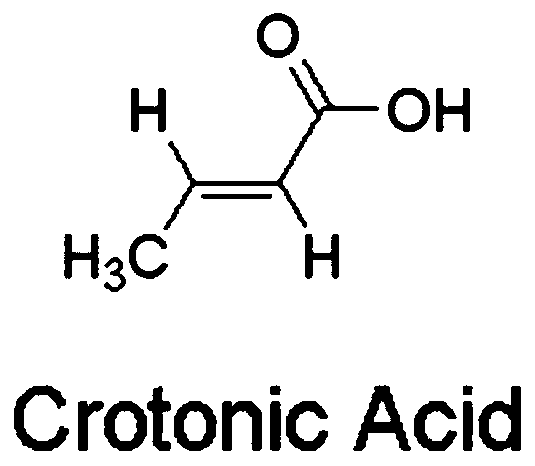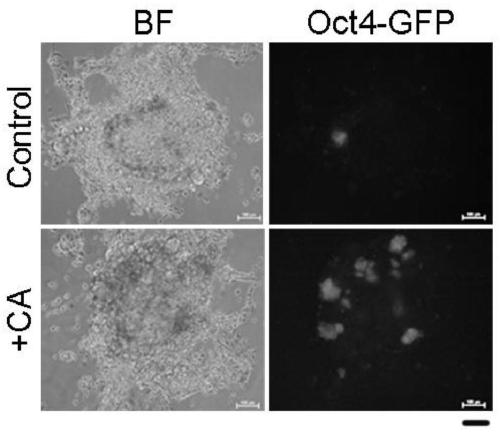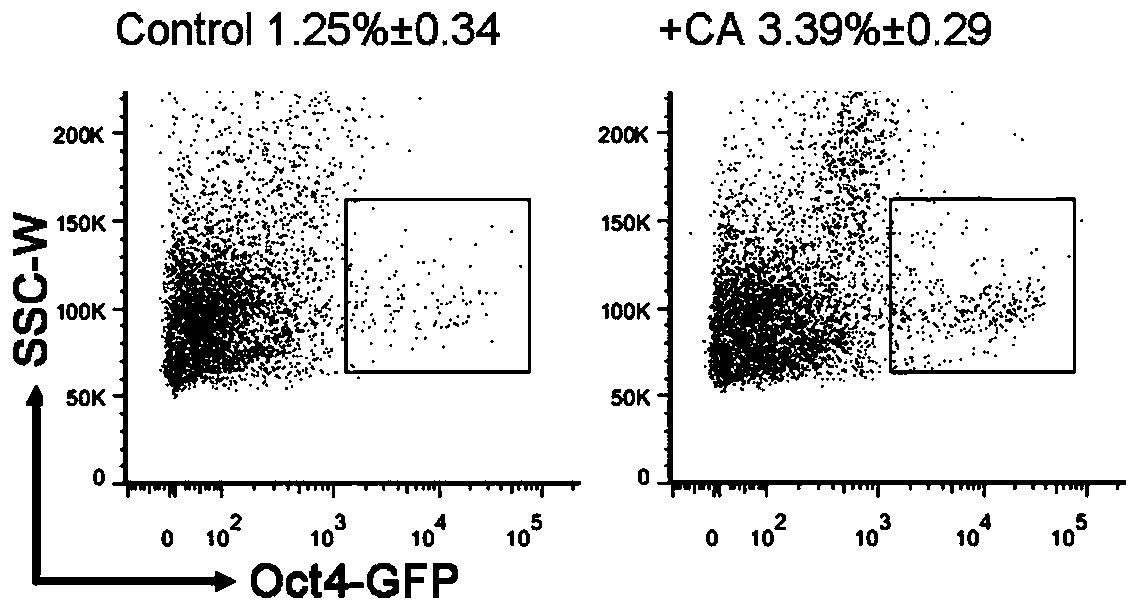A method for improving the efficiency of chemically induced reprogramming by using crotonic acid to activate zscan4 and other second-cell phase genes and lengthen telomeres
A chemically induced, crotonic acid technique for biomedical applications
- Summary
- Abstract
- Description
- Claims
- Application Information
AI Technical Summary
Problems solved by technology
Method used
Image
Examples
Embodiment 1
[0035] Embodiment 1: detect the improvement of induction efficiency after adding crotonic acid in the process of chemical induction ( figure 2 ,3)
[0036] A method for improving the efficiency of chemically induced reprogramming by using crotonic acid to activate the expression of genes at the second cell stage, comprising the following steps:
[0037] Section 1. MEF Cell Isolation and Primary Culture
[0038] The 13.5-day-old pregnant mice were killed, the limbs, head and tail, and viscera were removed, the tissues were chopped, digested with 0.05mM trypsin at 37°C for 10 minutes, and then adhered to the culture. Adherent spindle cells were primary MEF cells.
[0039] 2. Adding crotonic acid to obtain chemically induced pluripotent stem cells
[0040]The primary MEF cells obtained in step 1 can be used as precursor cells for chemically induced reprogramming by culturing up to 3 passages. First, 50,000 primary MEF cells were inoculated in a six-well plate, and the next d...
Embodiment 2
[0043] Embodiment 2: Detection of the impact and mechanism of action on chemically induced reprogramming after adding crotonic acid ( Figure 4 , 5, 6, 7, 8, 9)
[0044] 1. Through the TRAP (Telomerase Activity Detection) experiment, it was confirmed that the addition of crotonic acid had no significant effect on the telomerase activity.
[0045] 2. The Western blot experiment proved that the Zscan4 protein was significantly up-regulated on the 28th day after adding crotonic acid, but had no obvious effect on other pluripotent proteins Oct4, Nanog and Lin28.
[0046] 3. Immunofluorescence staining results showed that Zscan4-positive cells increased significantly on the 28th day after adding crotonic acid, and there were significant differences in the statistical results.
[0047] 4. The results of RNA-seq sequencing also confirmed that a series of second-cell stage genes including Zscan4 were significantly activated after the addition of crotonic acid, which was consistent wi...
Embodiment 3
[0050] Example 3: Identification of CiPS induced by adding crotonic acid ( Figure 10 , 11, 12)
[0051] We performed immunofluorescence staining of pluripotency markers Nanog, Sox2 and SSEA1 on the CiPS induced by adding crotonic acid, showing that the CiPS obtained by this method has good pluripotency. The chimera experiments conducted by injection of 4-8 cells also confirmed that the CiPS obtained by this method has the in vivo developmental potential to form high chimeras, which is of great significance for future regenerative medicine and clinical applications. Compared with CiPS without adding crotonic acid, the CiPS induced by crotonic acid shared a closer gene expression profile with the normal embryonic stem cell line OG4.
PUM
 Login to View More
Login to View More Abstract
Description
Claims
Application Information
 Login to View More
Login to View More - R&D
- Intellectual Property
- Life Sciences
- Materials
- Tech Scout
- Unparalleled Data Quality
- Higher Quality Content
- 60% Fewer Hallucinations
Browse by: Latest US Patents, China's latest patents, Technical Efficacy Thesaurus, Application Domain, Technology Topic, Popular Technical Reports.
© 2025 PatSnap. All rights reserved.Legal|Privacy policy|Modern Slavery Act Transparency Statement|Sitemap|About US| Contact US: help@patsnap.com



